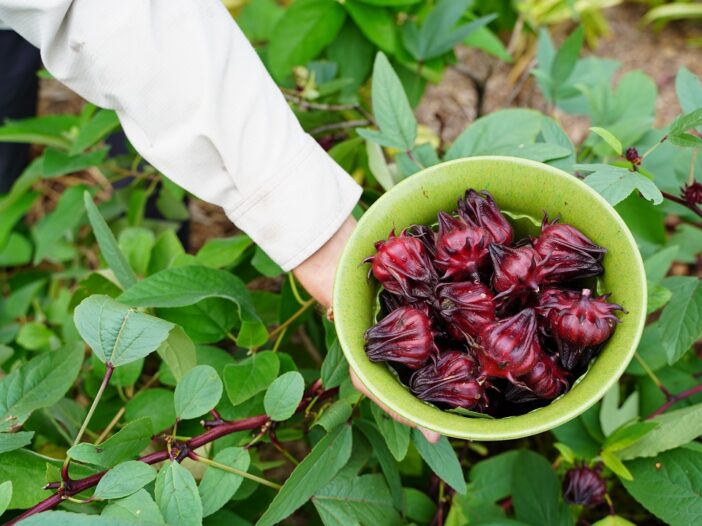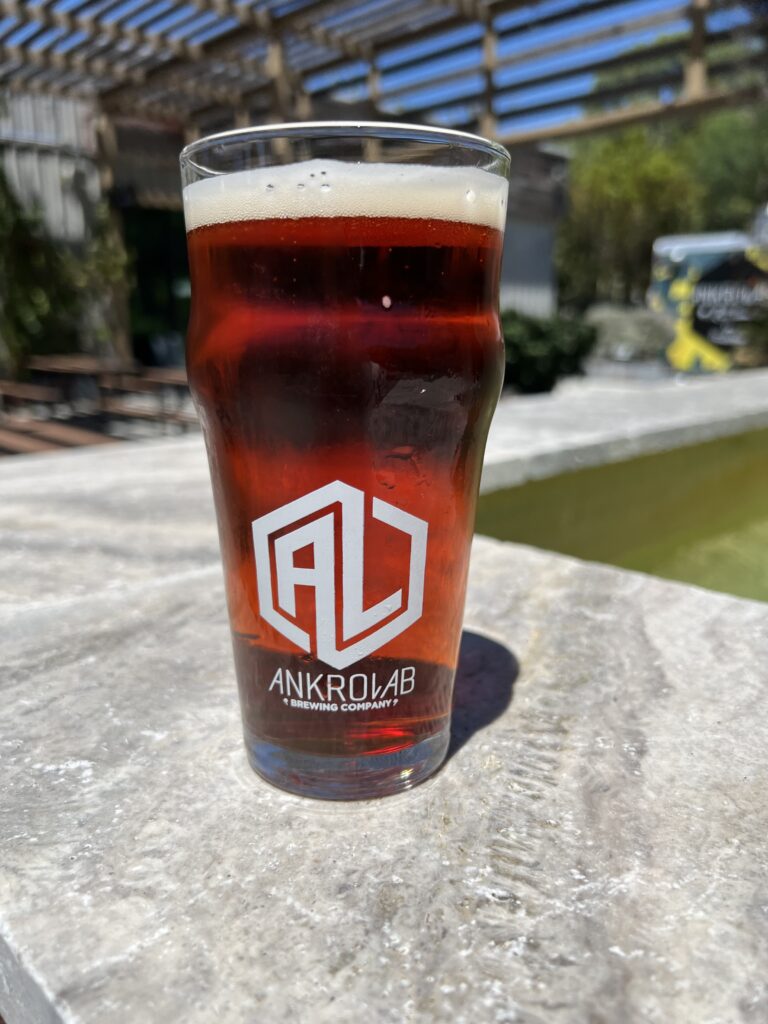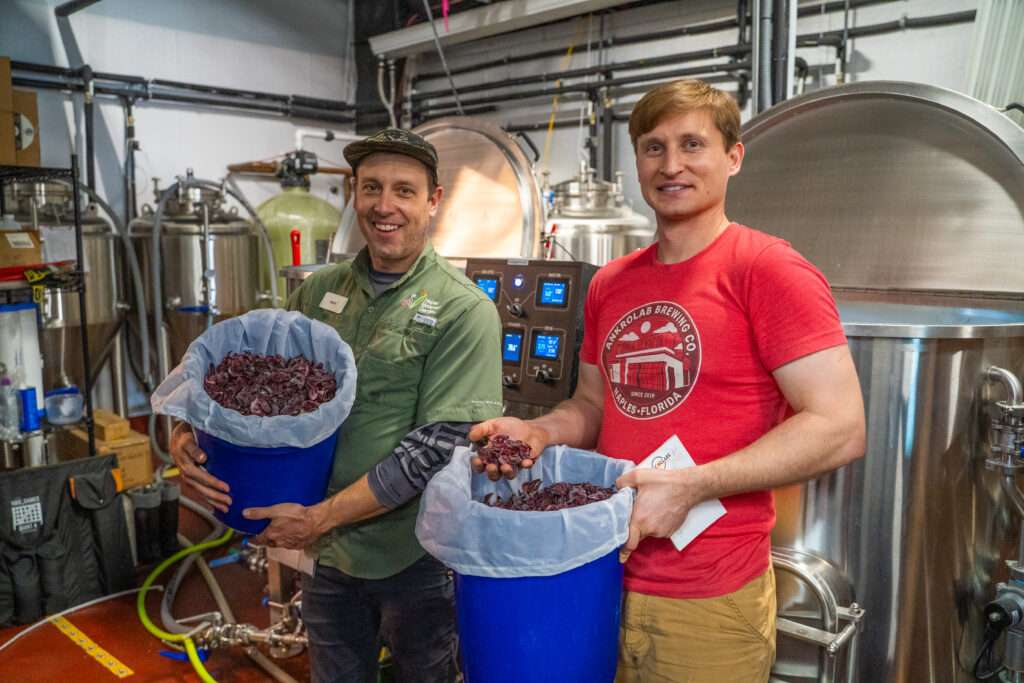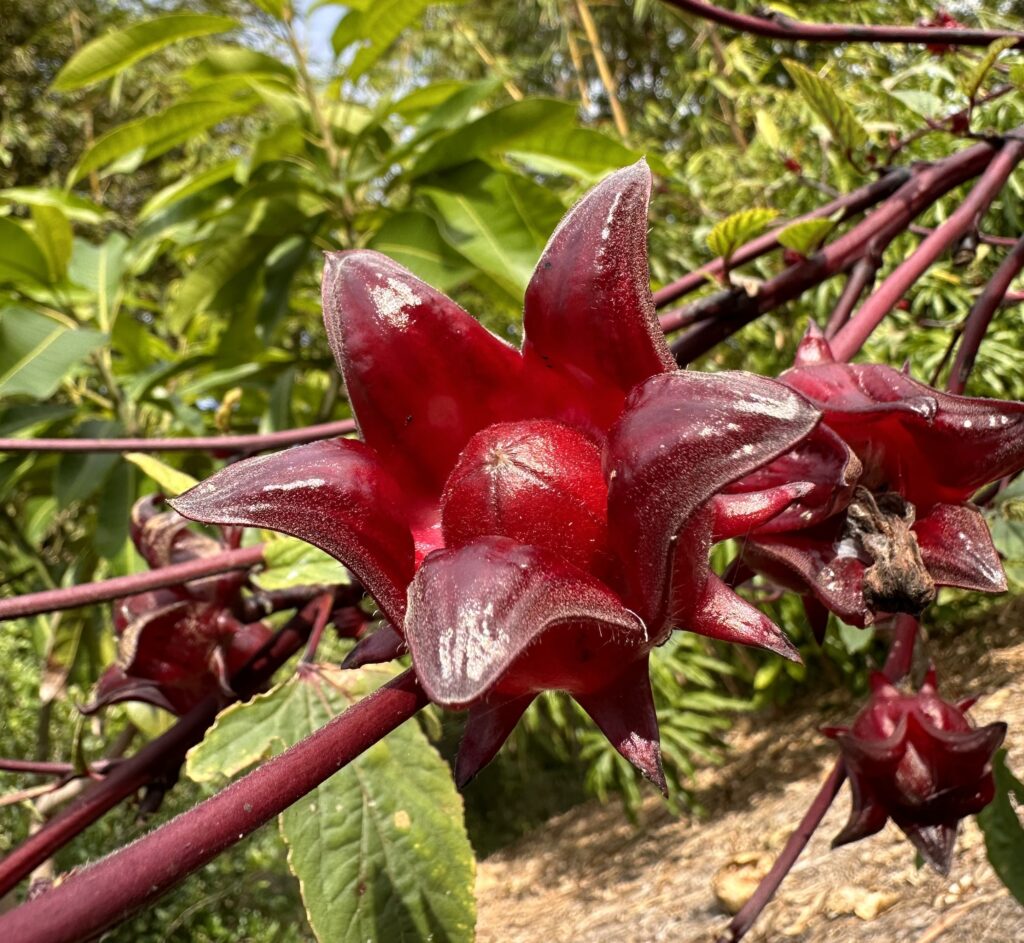
The plant that flavors Ankrolab Brewing Company’s new, limited release “Hibiscus Kiss” is an edible shrub grown in the Garden and dubbed “Florida cranberry” for its crimson color and subtle tartness.
Roselle (Hibiscus sabdariffa) originated in Africa and made its way to the Caribbean via trade routes before its introduction to Florida where early settlers cultivated it in backyard plots. Curator of Special Collections Matt Herrman grows it annually in the Kapnick Caribbean Garden and offered a portion of last year’s crop to Ankrolab, a frequent partner. The Garden’s herbs, ginger, mangos, and lychees have flavored previous limited-release brews.

“I’m excited about this,” says Ankrolab owner Adam Kelley. “It’s got this nice floral background. The hibiscus has kind of a taste between a lemon and a cranberry — it really shines.”
The brewery infused an ale with about 11 pounds of roselle and added a dried berry mix to round out the flavor. Ankrolab will release Hibiscus Kiss on Friday, April 19, and offer it until runs out. Kelley anticipates the 75 gallons will last about three weeks.
The edible portion of the plant is known as the “calyx,” which consists of the flower’s sepals, leaf-like structures at the flower’s base. Once the roselle blooms, the petals fall off and the sepals enlarge slightly, forming a crown-shaped bud. The calyces can be sprinkled fresh on salads, processed into jams, and infused into beverages, such as tea, Jamaican sorrel (a holiday drink), and, in this case, beer.

Roselle is easy to grow in Florida, Herrman says. You can treat it as a landscape plant, as the shrub produces a lovely pink bloom and crimson calyces. Be forewarned, though, that is more akin to an annual highlight than a permanent fixture, and you should expect to replace it every year or so.
Herrman grows it as an edible, planting it in the spring and harvesting in the fall. (To see our crop, visit the “living fence” agricultural plot in the Kapnick Caribbean Garden. You’ll find it adjacent to the Lake Trail, behind the Pastore Caribbean House.)
“I like the taste of it raw off the plant,” Herrman says. “That’s where you get that ‘Florida cranberry’ taste.”
He has not grown roselle in containers but anticipates it would do well in pots of at least 5-7 gallons. The shrub thrives in the summertime heat and rain, Herrman says. Keep your plants well-watered, he advises.

There’s a lot you can do with your harvest, says Fogg Café Sous Chef Lalo Hernandez. For a summer thirst-quencher, boil two cups of pre-washed roselle with four cups of water, simmer, and then add lemon and sugar to taste. “Man, a glass of that on a hot day will do it,” he says.
You also can cook with it, Hernandez adds. Treat it like you would a bell pepper, he says. In the past, he has added roselle to quesadillas, giving the familiar dish a unique spin.
“The possibilities are endless,” he says.
More information on roselle can be found on the University of Florida IFAS website.

About the Author
Jennifer Reed is the Garden’s Editorial Director and a longtime Southwest Florida journalist.

